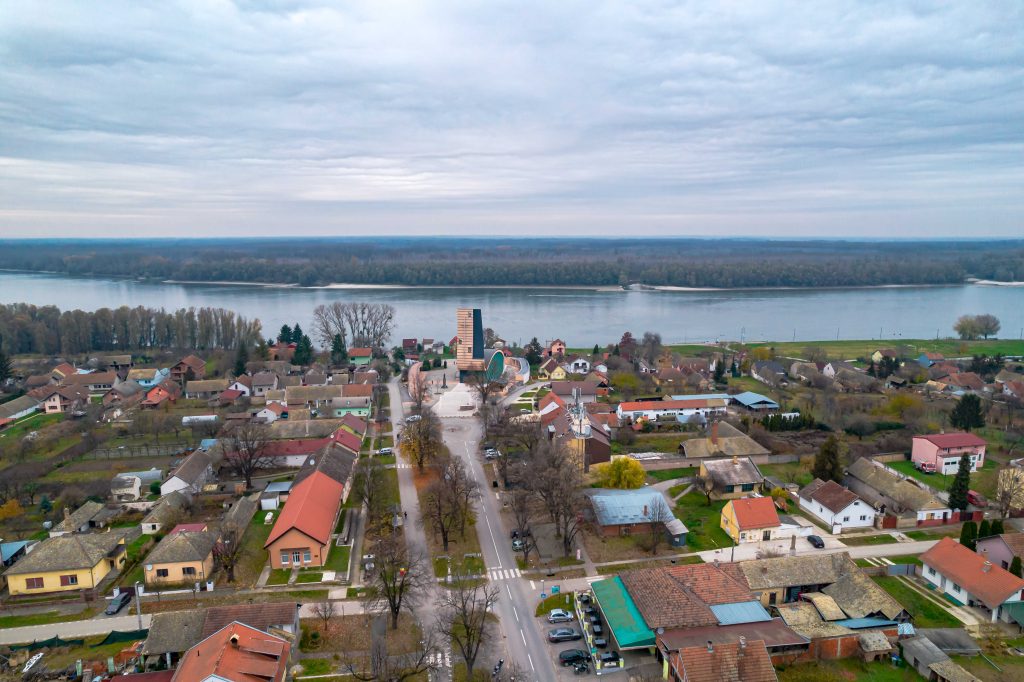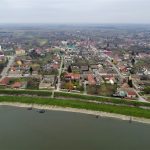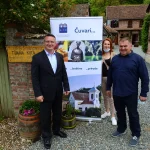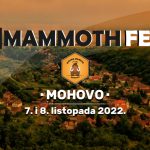Located some twenty-six kilometres east of Osijek and the same distance north of Vukovar, between the slopes of Alma Mons, or Fruška Gora, and the bank of the Danube, this small fishing village patiently awaits the arrival of all who seek peace and quiet. Four streets, a thousand or so houses, one big church, some 350 people. Is that all there is? Of course not. Hundreds of years of history, legends, traditions, and the best fish stew you would ever hope to try. An easy, quiet lifestyle with all that you might need. Even business opportunities.
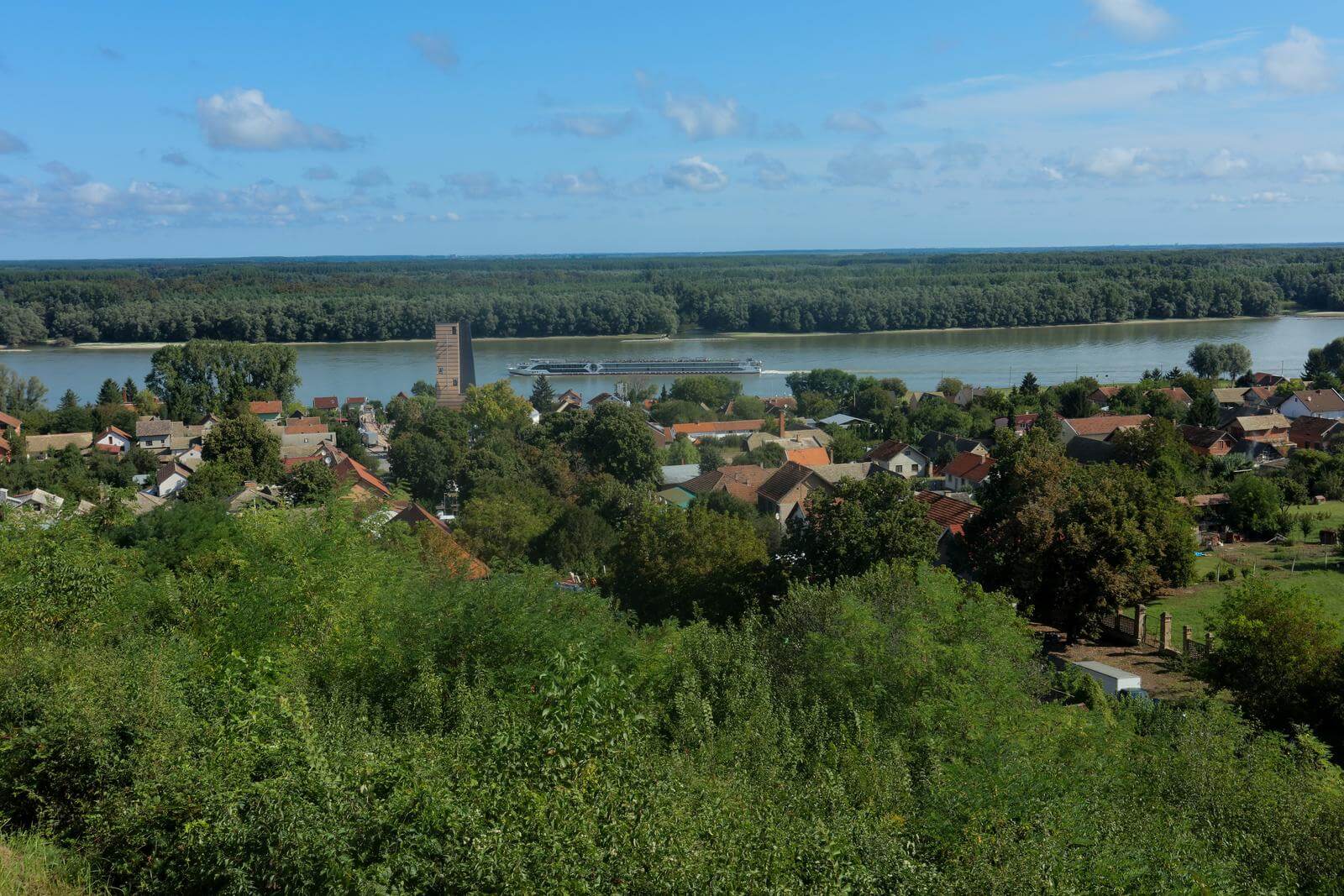
Photo: Dubravka Petric (PIXSELL)
It has been 785 years since the first mention of the name Aljmaš. The area itself, though, has hosted life since long before, and the locals keep finding remains of Roman architecture to this day. With its geographical position in proximity to the river, the settlement surely played an important role in the Roman empire. A theory excitedly discussed among the locals is that a yet-to-be-located battle between the Romans and the Illyrians might have happened in the valley of Aljmaš itself.
The historical importance of the village also lies in the fact that the well-known Hungarian humanist and poet Janus Panonnius was born in none other than Aljmaš. Though Čazma was previously believed to be his birthplace, his verses confirm that it was indeed “Where the Drava surrounds its name and water to the Danube”. And during the Austro-Hungarian rule, it was the beloved summer garden of Maria Theresa.
As for other popular sources of debate, there is an interesting theory that explores the possibility that Novi Sad in Serbia was built by settlers from Aljmaš, somewhat resembling the New Amsterdam story. In the early 18th century, when the plague was the main threat in Europe, a group of people from Aljmaš apparently sailed out on a raft down the Danube to escape the disease. They might have settled some 130 km east, around the area of today’s Novi Sad. To confirm this theory, the locals point out that the streets of Aljmaš were called sadovi, which is an old Slavic word for garden, and the name Novi Sad, you guessed it, means a new garden. Secondly, Novi Sad, the city is only about three hundred years old, which would correspond to the time of movement.
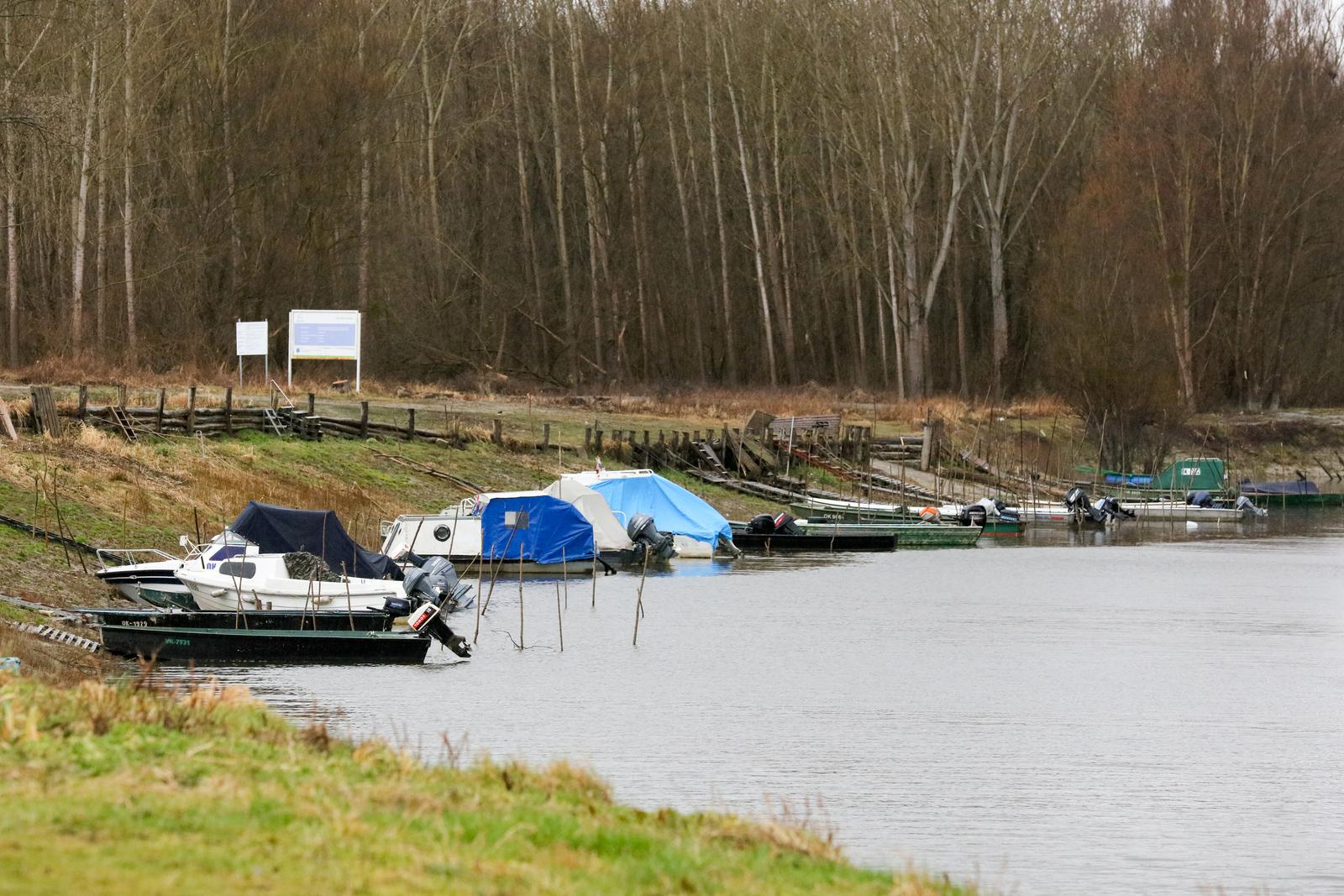
Photo: Dubravka Petric (PIXSELL)
Modern Aljmaš lived its golden age between the two world wars, when 1446 people lived there, who owned 46 businesses, and the village had 2 butchers and 3 bakeries. It was an important port on the way from the Black Sea to Budapest, which, as you can imagine, ensured that the birth rate would steadily grow. It was also an important weekend and summer home for the nobles of Osijek and Vukovar who needed a quiet place in nature, especially those who liked fishing. After the second world war, as well as the Homeland war, the population of Aljmaš unfortunately significantly declined, leaving it at approximately a quarter of what it used to be.
It is, however, slowly being rediscovered. Trying to escape a busy hectic lifestyle, many will naturally gravitate towards picturesque little places like this to spend their holidays, weekends, or retirement, but people have also started permanently moving there to live a relaxed life and raise their children in a safe environment where nature still dictates the way of life.
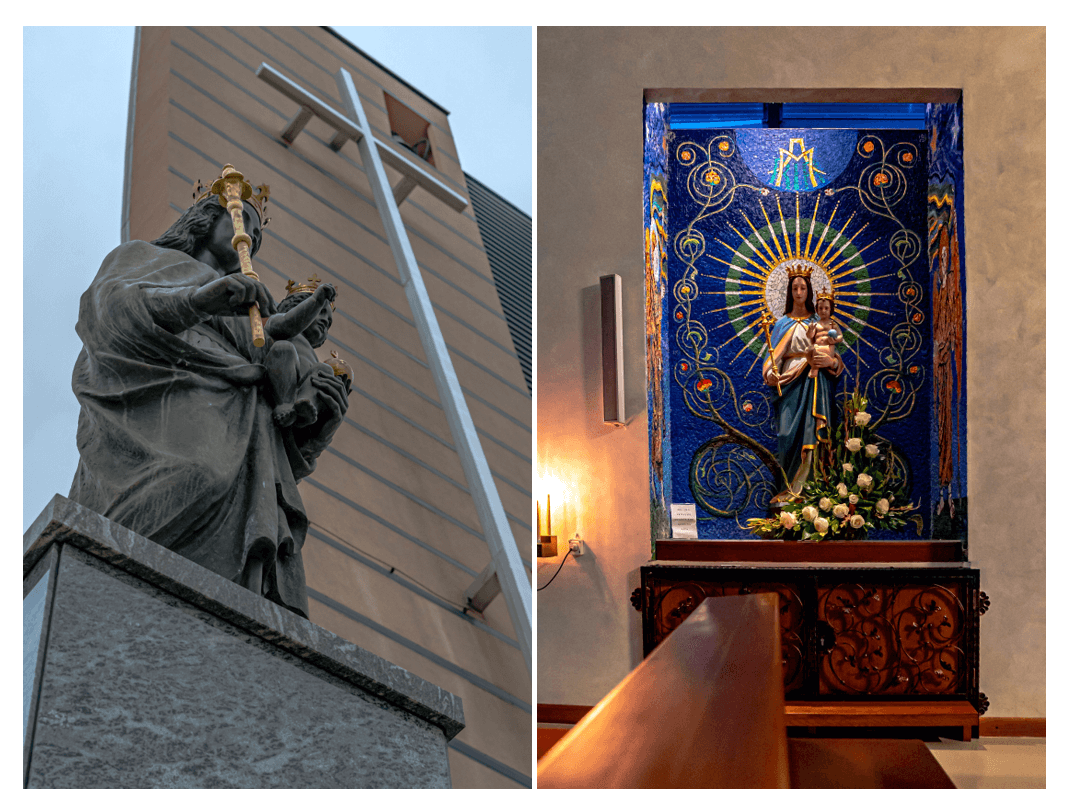
Photos: Steve Tsentserensky
Catholicism has always played a very important role here, so much so that even during the Ottoman rule when many were forced to convert to Islam, Aljmaš remained a Catholic settlement. Nowadays, it is one of the famous places of worship and pilgrimage in the name of Mary. Even though a legend does exist of a sighting of the Virgin Mary, the reason why Aljmaš became her home is different. In 1704, a statue of Mary was brought from the village of Lug in Baranja to save it from the rebellion that was brewing there against the Habsburg monarchy. A humble little church made of branches and mud stood in Aljmaš to provide shelter. Mary has been the symbol of Aljmaš ever since. In 1846 the village church burnt down, along with the statue, only leaving a painting of the former statue. A new baroque church was built, and the bishop Josip Juraj Strossmayer financed a new statue to be made in Vienna. During the Homeland war in 1991, the said church was heavily bombarded and taken down, and the statue was believed to be destroyed. In 1992, however, a Russian UN soldier found the statue with only the crown and a part of one arm missing, dressed it in his vest, and put a helmet on it to conceal it and safely transport it to Osijek. Just like the people of Aljmaš, it spent years in exile. It remained in Osijek until 1998 when it was taken back to Aljmaš. The road, of course, was the Danube. It was taken on a boat, with hundreds of fishing boats following.
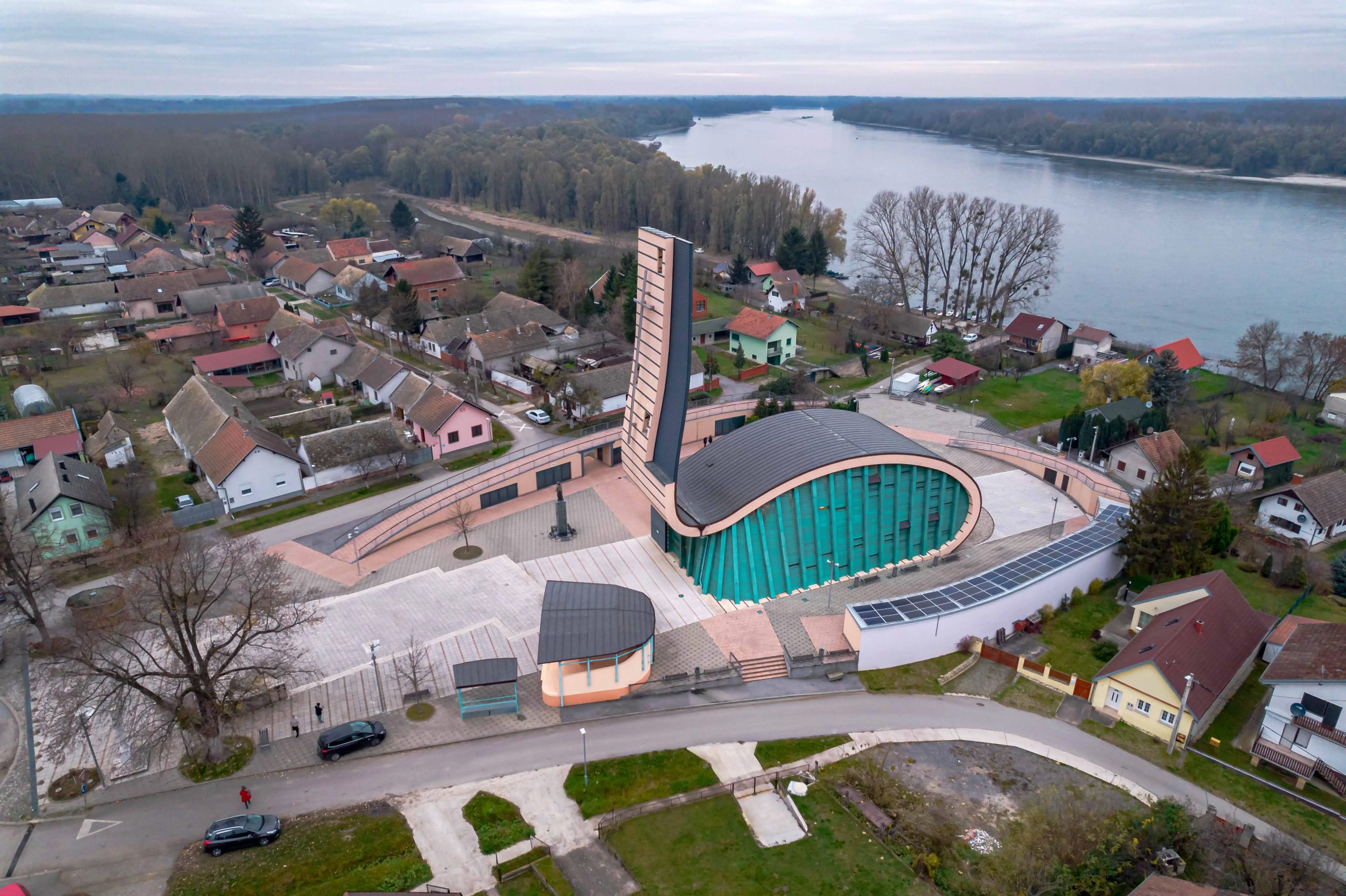
Photo: Steve Tsentserensky
With the old church destroyed and the statue of Mary having been returned to Aljmaš, the local government decided to invest in a new place for worship and built the new, monumental church in 2003. It is famous for its architecture, but this does spark debate among the locals. While some think that its modern design draws people in, others disagree since its architectural integrity might not be the best, and it is questionable how long the church will withstand the humidity and the winds from the Danube.
One thing is for sure, though. The church is still an important place not only for the residents of Aljmaš but for many who visit to pray and contemplate. Without a doubt, the most important date remains today, August 15, marking the Assumption of Mary. Year after year, the holy mass in the open gathers thousands of pilgrims. Though it is a quiet celebration, the village comes alive in its former glory with people walking, talking, praying, and the children all gathering around the little stalls for ice cream, cotton candy, or plastic toys.
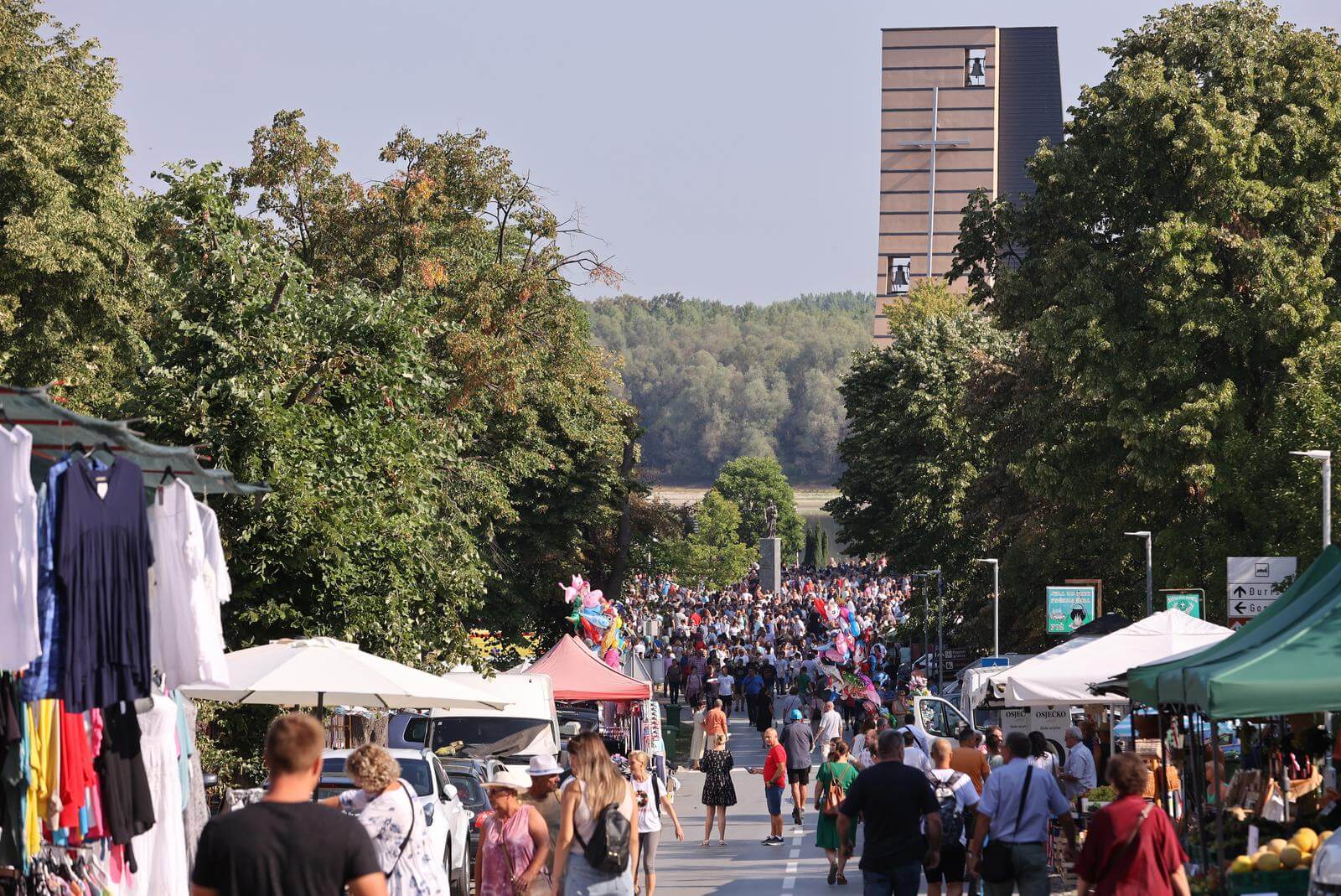
Photo: Davor Javorovic (PIXSELL)
Even though August 15 remains the most important day for Aljmaš, it is not the only day when something happens. The locals gathered in cultural societies make sure that the traditions keep on living, and that daily life is still eventful. To find out more about the local customs and traditions which live on, how the village Google makes sure they know it all, why foreigners keep buying houses there, and when you should make sure you visit, stay tuned for part 2 next week on TCN.
Special thanks to Marina, a tourist guide from Aljmaš, who works hard to keep tradition alive and who happily shared her stories with TCN.
How good is your knowledge of eastern Croatia? Take the CROMADS test above – how many places do you recognise?
For more, make sure to check out our dedicated Lifestyle section.

